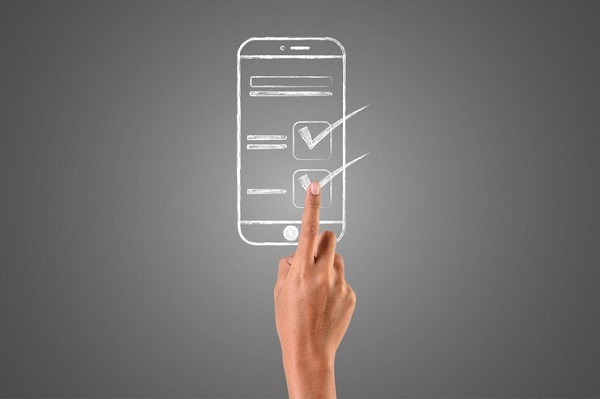

In the fast-paced world of modern project management, where teams are often spread across the globe and tasks multiply like digital rabbits, maintaining order and clarity is no small feat. This is where Kanban steps in, functioning as a seasoned navigator to streamline your workflow with precision and clarity. According to the State of Kanban Report 2023, 76% of professionals have attested that Kanban is “much more effective” than other methods/frameworks that they have used in the past. That’s not a mere coincidence – it's a testimony to Kanban's prowess in workflow management.
Let's take a step back to understand what exactly Kanban is and why it wields such influence over modern work management. At its core, the Kanban method is a simple yet flexible approach to workflow management. It's like having your very own GPS to navigate through your maze of tasks, no matter how intricate!
Imagine you're part of a customer support team in a tech company. Your team deals with a constant influx of customer inquiries and support tickets, and keeping everything organised is a Herculean task. To keep everything on track, you turn to a digital Kanban board. This virtual board is divided into columns that represent the crucial stages of your support workflow: "New Requests," "Assigned," "In Progress," and "Resolved."
Each customer support ticket that is raised gets seamlessly transformed into a digital card that moves through these columns as it gets handled. The best part? With a quick glance at the digital Kanban board, you and your team can effortlessly identify which tickets are awaiting attention, who's responsible for each one and which issues need immediate resolution. It's like having a streamlined command center for customer support, ensuring that no customer request goes unanswered.
Join us as we unravel what Kanban board is and how to make the most of the tool that doesn't just simplify but revolutionises the way we work.
Kanban helps you maintain clarity and focus in a bustling work environment. Let’s look at the key advantages of Kanban board.
Kanban's lightweight approach gets the job done without overwhelming you with unnecessary features. It's perfect for small teams or projects on a tight budget. The focus is on effective communication and feedback, ensuring all stakeholders stay engaged and accountable.
Kanban sets work-in-progress limits, preventing teams from taking on too much at once and ensuring current commitments are completed before new ones begin. This eliminates bottlenecks and keeps tasks on track.
Kanban's dynamic management system allows for continuous delivery and the flexibility to adapt to changing priorities. Features are released as soon as they're ready, giving you the freedom to adjust based on market shifts or organisational needs.
In the world of Kanban, your team is at the forefront, deeply understanding the processes they work on daily. Collaboration leads to collective decision-making, empowering your team to drive innovation and give your organisation a competitive edge.
Multitasking might seem like a time-saver, but it often leads to context-switching, which can cause from 5 to 30 minutes of wasted time per task, depending on the task and the person involved. Kanban's work-in-progress (WIP) limits ensure that one task is completed before another begins, allowing team members to concentrate on a single task at a time. This focus, combined with workflow optimisation, enhances focus and efficiency, helping you deliver more value in less time.
Kanban aligns with Lean principles, emphasising waste reduction. By eliminating unnecessary tasks and idle time, your Kanban board becomes a powerhouse of efficiency, ensuring you deliver maximum value to your customers.
Let's explore the key components of kanban boards.
Kanban cards represent individual tasks or projects and move seamlessly from one column to another as they progress through the workflow. These cards can store rich content, including images, comments, attachments and more; ensuring all the necessary information is readily accessible in one place. For instance, a Kanban card for a new product development project might include task descriptions, assigned managers, due dates, planned status updates, team comments, internal IDs, file attachments and links to code repositories or external documentation.
Columns are the backbone of the Kanban board. They serve as a visual representation of your workflow's various stages. Each column corresponds to a specific activity, collectively forming your workflow. Cards move smoothly through these columns until they reach completion. Workflows can be as straightforward as "To Do," "In Progress," and "Complete," or can become more intricate as per your requirements.
WIP limits encourage you to concentrate on what truly matters and discourage wasteful multitasking. These limits require you to set a maximum number of tasks allowed to be in progress within a column simultaneously. For example, you might establish a WIP limit of four tasks for your "In Progress" column. This means that no more than four tasks should be in progress at any given moment. Adhering to Kanban board WIP limits aids in prioritising work, reducing stress and increasing overall efficiency.
Swimlanes are horizontal dividers on your Kanban board, helping you categorise tasks based on specific criteria such as project, type, client, priority, etc. They allow you to group related task cards together, offering a clear and organised overview of your workflow. For instance, you can use swimlanes to distinguish between high, medium and low-priority tasks or to separate tasks related to product A from those related to product B. The more visually comprehensible your board, the easier it becomes to prioritise work and ensure that nothing gets overlooked.
Kanban boards often feature a backlog, a place where ideas for projects are collected, waiting for the team to pick them up when they're ready. The commitment point marks the moment when an idea is selected by the team and work officially commences on the project.
The delivery point signifies the conclusion of a Kanban team's workflow. The team's ultimate objective is to swiftly move cards from the commitment point to the delivery point, minimising the elapsed time in between, referred to as “Lead Time”. Teams employing Kanban are continually striving to reduce their lead time to the bare minimum through continuous improvements.

Kanban's journey begins with maximising existing resources and optimising productivity. It's a unique approach that shifts the focus from starting tasks to completing them efficiently. By zeroing in on workflow bottlenecks and impediments, Kanban opens doors to opportunities for continuous improvement.
This streamlined approach is reflected in Kanban metrics like cycle time and productivity. Cycle time measures how quickly tasks move through your system, while productivity signifies the volume of work achieved in a set period.
As your team adopts Kanban, you'll notice a significant reduction in cycle time and a boost in productivity. It's like revving up your workflow engine, delivering more results in less time.
At the heart of Kanban lies the Kanban board, serving as a foundational element of this methodology. Its primary purpose is to visually represent the steps necessary to transform an idea into a reality. While implementations may vary, a typical Kanban board example would include distinct rows representing different departments or teams, each having its dedicated "card." Columns are then divided into "to-do" and "done" sections. With their associated responsibilities clearly outlined, the corresponding cards automatically move to the "done" column as team members finish their tasks. This simple yet powerful visual representation facilitates seamless project management and identifies bottlenecks in real time.
Kanban brings with it a newfound level of adaptability that traditional methods often lack. With its emphasis on continuous delivery and the absence of predefined iterations, Kanban provides the flexibility needed to build a sustainable competitive advantage. Kanban allows teams to reevaluate priorities in response to changes in the market or within the organisation. Features are released as soon as they are ready, without the constraints of predefined phases. If you're seeking optimal flexibility in your development process, Kanban stands as the ideal choice.
Kanban cultivates a culture of seamless teamwork where each team member plays a unique role and contributes harmoniously to collective performance. It encourages your team to collaborate effectively, working together to achieve collective improvement. Through idea sharing, process refinement and synchronised efforts, Kanban not only optimises your workflow but also fosters camaraderie and a healthy sense of competition among team members.
In the ever-changing landscape of business, having a reliable roadmap is crucial. Kanban offers a robust roadmap through its visual representation of your workflow. It helps you identify bottlenecks, track progress and troubleshoot issues in real time. This foresight is akin to having a dependable navigation tool for your projects.
Kanban's stability empowers data-driven decision-making. By analysing historical data, you gain the ability to make precise predictions, set targets and evaluate their probabilities. It's like having a dependable compass guiding you toward your project's future with confidence.
To make the most of Kanban, you must follow these essential steps:
Start by creating a Kanban board that represents the various stages of your work process. A well-structured board should provide a clear overview of how work is processed, helping your team understand the workflow easily.
Use the Kanban board to spot potential issues in your process. If you notice a column where tasks accumulate faster than completed, it's a sign of a bottleneck. Precisely map your workflow to pinpoint the problem's source. Once identified, take prompt action to resolve the bottleneck. You can limit work in progress, redistribute team efforts, or make other adjustments to maintain a smooth flow.
To boost productivity and focus on task completion, establish WIP limits. Set a maximum number of tasks allowed in progress simultaneously on your board or impose limits at each workflow stage.
Utilise your Kanban board as an information repository, where all task-related data, documents and comments are easily accessible. This centralisation streamlines communication and ensures everyone has the necessary information at their fingertips.
Collecting key performance indicators (KPIs) is akin to equipping your team with a dashboard that displays the vital stats of your workflow. These metrics serve as your compass, providing insights into your team's efficiency and areas that warrant attention. They go much beyond problem-spotting. They are tailored to measure various facets of your workflow. For instance, cycle time tracks the duration from task start to finish, while lead time calculates the total time from task initiation to completion. Choosing the right KPIs at the right time empowers your team to steer towards workflow enhancements with precision.

Kanban is a versatile method that finds value in a variety of industries and scenarios. Here’s a quick look:
Project managers, regardless of their industry, can benefit from using Kanban boards to oversee tasks, monitor progress and ensure that projects stay on track. It provides them with a visual tool to manage and allocate resources efficiently.
Software development teams can utilise Kanban to streamline their work processes, enhance collaboration and deliver software products more reliably. It's particularly useful in Agile environments where flexibility and adaptability are key.
Kanban has its roots in manufacturing and continues to be a go-to method for optimising production lines and managing inventory effectively. Manufacturing teams can use Kanban boards to visualise workflows and minimise waste.
Teams in service-oriented industries, such as customer support or marketing, can leverage Kanban to prioritise tasks, manage workloads and ensure prompt responses to customer inquiries. It's a valuable tool for maintaining service quality.
Even individuals, such as freelancers or small business owners, can find value in Kanban boards. They can use them to organise tasks, track progress and enhance personal productivity.
Agile teams, including those following Scrum, can integrate Kanban into their existing methodologies to further optimise their workflows. It provides additional insights and flexibility to Agile practices.
Kanban, with its adaptability and visual approach, seamlessly integrates with various project management methodologies, including Agile, Scrum and Waterfall. Its compatibility with these methodologies enhances their effectiveness and allows teams to tailor Kanban to their specific needs.
What is Kanban board in Agile and how are they connected? Agile is a software development approach and Kanban is a means to implement Agile principles effectively. Within Agile, teams often follow short iterations of work called sprints and Kanban boards become the visual tool to plan these sprints. Agile project management teams find Agile Kanban board attractive due to its user-friendliness and visual interface. It allows instant visibility into team tasks, progress tracking and the identification of potential bottlenecks. In essence, Kanban acts as the practical application of Agile's guidelines, making work management smoother and more transparent.
Scrum is another framework used to implement Agile principles. Kanban and Scrum can complement each other, particularly in visualising workflow and eliminating waste. However, there are distinctions. Scrum defines roles and responsibilities, whereas Kanban provides more flexibility. Kanban's focus is on visualisation, while Scrum is more iterative. Teams can customise Kanban to fit within a Scrum framework, sometimes leading to hybrid methodologies known as "Scrumban." In this way, they can leverage the strengths of both approaches.
Waterfall is a project management methodology suited for linear, sequential projects. Kanban can be integrated into Waterfall as a work management framework. In Waterfall, Kanban boards serve a different purpose as compared to Agile. They are utilised to manage daily work rather than as a primary planning tool. Unlike Agile's iterative approach, Waterfall projects progress sequentially through stages. Kanban's adaptability allows it to find utility within Waterfall, helping teams manage their ongoing tasks effectively.

Optimise the potential of Kanban by ensuring the right implementation of these essential Kanban features.
Custom columns are the backbone of a Kanban board. They allow you to tailor your workflow to your specific needs. With custom columns, you can create stages that reflect your unique processes, from "Ideation" to "Deployment" or "Client Review" to "Final Approval." This flexibility ensures that your Kanban board aligns perfectly with your project's requirements. Whether you're managing software development, marketing campaigns, or any other workflow, custom columns provide the adaptability essential for efficient task management.
Attachments in Kanban cards serve as a valuable information repository. You can attach documents, images, design mockups, or any relevant files directly to a card. This feature streamlines collaboration by ensuring that all the necessary resources and references are at your team's fingertips. Need to share a detailed project brief, a client's feedback, or a design prototype? Attachments make it effortless, reducing the need to switch between multiple tools or platforms, thereby enhancing productivity and organisation.
Filters are a game-changer when it comes to managing large Kanban boards. They allow you to focus on what's most relevant at any given moment. Whether you want to view tasks assigned to a specific team member, prioritise high-priority items, or track overdue tasks, filters empower you to refine your board's display. With just a few clicks, you can narrow down your view, decluttering the board and making it easier to concentrate on critical tasks. Filters boost efficiency, especially in complex projects with numerous moving parts.
Kanban is all about collaboration, and collaboration features are paramount. Real-time comments, mentions and notifications facilitate seamless communication among team members. You can provide feedback, seek clarification, or share updates directly on Kanban cards, eliminating the need for lengthy email chains or disjointed discussions across different platforms. Effective collaboration ensures that everyone is on the same page, promotes transparency and accelerates decision-making, driving projects toward successful completion.
Dashboards provide a bird's-eye view of your Kanban board's performance. They compile key metrics, charts and analytics, allowing you to assess your team's productivity, track progress and identify bottlenecks at a glance. Customisable dashboards enable you to choose the metrics that matter most to your workflow, whether it's cycle time, throughput, or task distribution. With data-driven insights readily available, you can make informed decisions, optimise your processes and continuously enhance your team's efficiency.
Visual flexibility is at the core of Kanban's appeal. Kanban boards offer a canvas for creativity and adaptability. You can customise card colors, labels and tags to categorise tasks by priority, type, or any criteria relevant to your project. This visual distinction simplifies task identification and prioritisation, ensuring that team members can quickly assess what requires attention. Visual cues help streamline workflows, reduce errors and enhance overall organisation, making it an indispensable feature for efficient task management.
Setting up your Kanban board is the first step towards efficient task management and workflow optimisation. Here's a step-by-step guide to get you started:
Choose a project management tool like monday.com that offers a Kanban-style workflow board.
Define your vertical columns on the board. A simple structure could include "To Do," "Doing," and "Done."
Start by adding Kanban cards that represent work items.
Design each card for easy comprehension, including a brief summary, status, theme, product type, release and owner.
Place cards in the appropriate columns on the Kanban board.
Visualise both current and upcoming work on your Kanban board.
Add future work items to your backlog, including those originating from other tools.
Prioritise backlog items, ensuring that the most critical tasks are at the top and ready for execution.
Before diving in, set clear goals and ground rules with your team.
Assign responsibilities for adding and removing cards, handling blocked tasks and reviewing the workflow.
Collaborate with different teams to establish and review shared policies, ensuring alignment.
Use regular meetings to gather feedback and review the Kanban board, starting with items nearing completion.
Collaboratively discuss ways to improve flow and overall team velocity.
Focus on:
Enable real-time team collaboration by allowing comments and notifications.
Team members can add comments at the task level and using "@" mentions ensures relevant individuals are notified.
By following these steps and leveraging the capabilities of your Kanban board on monday.com, you can enhance task management, improve workflow visibility and foster collaboration within your team, ultimately leading to increased productivity and project success.

Kanban boards come in two primary forms: physical and digital. Each type has its own set of advantages and disadvantages, making them suitable for different contexts and preferences.
A tangible Kanban system that uses a board with columns and sticky notes to visually represent work stages, making it easy to track and prioritise tasks.
Pros:
Tangible and Visual: Physical boards are highly visual and tangible, making it easy for team members to physically interact with tasks represented as sticky notes. This can enhance engagement and awareness.
Easy Setup: Setting up a physical Kanban board is straightforward and doesn't require any special software or technical knowledge, making it a time and cost-effective option.
Customisable: Teams can easily adapt and modify the board layout and columns as needed, making it flexible for various workflows.
Cons:
Limited Accessibility: Physical boards are confined to a physical location, making it challenging for remote teams or those in different geographic locations to collaborate effectively.
Information Management: Managing and sharing information beyond the team in the same physical space can be cumbersome. Reporting and analytics may require manual effort.
Dependency on Supplies: Teams need a steady supply of sticky notes and markers, which could be an ongoing expense.
Digital Kanban boards enable teams to collaborate, track work progress and manage tasks online with real-time updates and analytics.
Pros:
Accessibility: Digital Kanban boards are accessible from anywhere with an internet connection. Team members can collaborate remotely, enhancing flexibility.
Real-time Updates: Changes and updates are reflected in real-time, ensuring that everyone has access to the most current information.
Advanced Features: Digital boards often offer advanced features such as automated notifications, analytics and integrations with other software tools, streamlining workflow management.
Document Management: Digital boards can store and manage documents and attachments related to tasks, reducing the need for separate document storage.
Cons:
Learning Curve: There might be a learning curve associated with using digital Kanban boards, especially for teams not accustomed to digital tools.
Cost: Digital solutions require subscription fees or licensing costs.
Technical Dependencies: Teams need access to digital devices and an internet connection, which may not be feasible for all team members.
Customisation Complexity: While digital boards offer customisation, they may require technical knowledge or administrative privileges, making them less flexible for immediate changes by team members.
These are the top 7 project management tools of 2023.
monday.com takes Agile Kanban to the next level with its expertise in seamlessly integrating Kanban boards into Agile methodologies. Offering a user-friendly interface, extensive customisation options and a suite of powerful features, monday.com empowers Agile teams to streamline project management with precision.
Wrike offers a wide range of project templates, including Kanban templates, simplifying the setup process for teams looking to get started quickly. Its intuitive interface and collaborative features ensure efficient task management.
Smartsheet combines the power of Kanban boards and Gantt charts, providing a versatile platform for managing projects of various complexities. This hybrid approach allows teams to plan, execute and track their work with precision.
Height specialises in cross-functional resource allocation, offering Kanban solutions that provide a comprehensive view of work across different teams. It's an ideal choice for organisations seeking streamlined coordination and resource management.
ClickUp's strength lies in its unparalleled customisation options. Teams can tailor their Kanban boards and features to align perfectly with their unique workflows, ensuring a personalised and efficient project management experience.
Zoho Projects excels at visualising project phases and progress through its intuitive Kanban boards. It empowers teams to track tasks and milestones effectively, enhancing overall project visibility.
Miro's Kanban boards foster enhanced team communication and collaboration. With a digital canvas for brainstorming and planning, Miro provides an interactive platform that ensures teams stay connected and productive.
Kanban is versatile and can be applied to various projects, including software development, marketing campaigns, manufacturing and more. It's particularly effective for projects with changing priorities and a continuous workflow.
Yes, Kanban can be accessed by globally distributed teams. With digital Kanban boards and collaboration tools, team members can work together seamlessly, regardless of their geographical locations.
Yes, Kanban is excellent at tracking incremental project progress. It provides real-time visibility into task status, allowing teams to monitor progress, identify bottlenecks and make continuous improvements throughout the project's lifecycle.
monday.com stands at the forefront of project management tools, offering an unparalleled experience when it comes to optimising Kanban workflows. Its robust features and versatility make it the best tool in the market for seamlessly integrating Kanban methodologies.
monday.com's user-friendly interface allows teams to effortlessly create and manage Kanban boards. Whether you're just starting or transitioning from another platform, monday.com offers a smooth and intuitive setup, ensuring that your Kanban board reflects your workflow with precision.
What sets monday.com apart is its extensive customisation options. It enables teams to tailor their Kanban boards to match their unique workflows. From defining status columns and card information to choosing cover columns and grouping tasks, monday.com empowers you to design your Kanban board to perfection.
monday.com seamlessly integrates Kanban boards with Agile methodologies, catering specifically to Agile teams. It bridges the gap between Agile and Kanban, providing a platform where Agile practices can flourish within a Kanban framework. This expertise makes monday.com the go-to choice for Agile Kanban enthusiasts.
Access your Kanban boards and manage tasks from anywhere with monday.com's cross-device accessibility. Whether you're in the office, on the go, or working remotely, you can stay connected to your projects and teams.
monday.com seamlessly blends Agile and Kanban practices, making it the top choice for teams looking to elevate their project management experience.
In the dynamic landscape of project management, choose TransFunnel as your strategic partner. Our array of project management solutions, meticulously designed and tailored to your unique needs, empowers you to steer your projects toward success with precision and agility.
With our expertise, you can optimise your workflow using industry-leading tools like Kanban, visualise your project's journey and unlock a realm of efficiency and collaboration.
Contact Us and embark on your journey to project management success with TransFunnel.